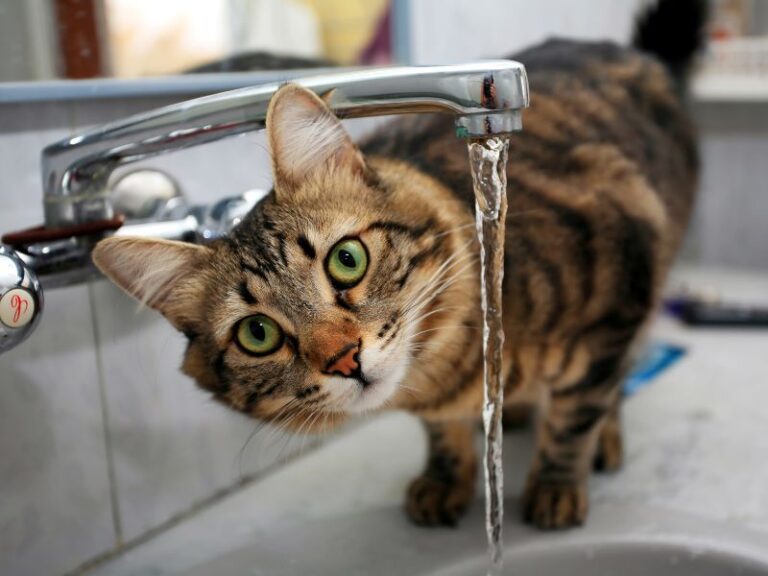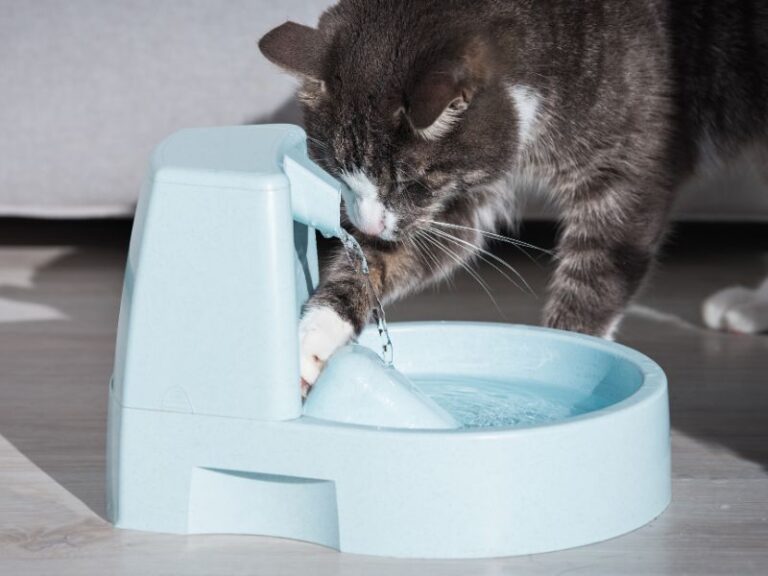Table of Contents
ToggleHave you ever found yourself marveling at your cat’s seemingly endless appetite? The way they approach their food bowl with an insatiable hunger can be both perplexing and endearing. As a cat owner, you might have wondered, “Why is my cat always hungry?” In this article, we embark on a journey to unravel the mysteries behind your feline friend’s voracious appetite. We’ll delve into the fascinating world of feline biology, evolutionary history, and emotional nuances, shedding light on the reasons your cat might appear to be in a perpetual state of hunger. So, let’s explore the complex interplay of factors that contribute to your cat’s insatiable desire for food.
Understanding the Feline Appetite
Cats are renowned for their discerning palates and the occasional disdain they show towards certain foods. This common perception has led to the widespread belief that all cats are inherently picky eaters. However, the reality is more intricate than this sweeping generalization. While some cats do display particular preferences, it’s important to recognize that the label of picky eater doesn’t encompass the entirety of feline behavior around food.
The Biological Blueprint
Beneath the surface of a seemingly choosy palate lies the intricate biological blueprint of a cat’s appetite regulation. This blueprint is a product of millions of years of evolution, shaped by the survival strategies of their wild ancestors. The feline digestive system and metabolism are fine-tuned for a specific lifestyle—one of a skilled predator with a history of hunting small prey throughout the day. Understanding this biological background is key to comprehending why a cat’s hunger might appear insatiable, even in a domestic setting.

Metabolism: The Engine of Hunger
During a cat’s early stages of life, from kittenhood to adolescence, their bodies undergo rapid growth and development. This critical period is marked by a surge in metabolic activity, a process that demands a substantial intake of nutrients and energy. This heightened metabolism is the driving force behind a kitten’s boundless energy and constant movement. As their bodies work tirelessly to build strong bones, sturdy muscles, and all the intricacies that make up a mature cat, their calorie requirements can seem surprisingly high.
How their energy expenditure requires frequent meals to maintain their activities.
Imagine the daily life of a cat: leaping onto high surfaces, engaging in playful pouncing, and those spontaneous zoomies that seem to come out of nowhere. Each of these actions requires energy—lots of it. Just like a high-performance engine requires a steady supply of fuel, a cat’s ceaseless activities necessitate regular feeding. With their energetic lifestyles, cats can burn through calories swiftly, leading to the frequent return to the food bowl.
Link between metabolism and a seemingly insatiable appetite.
The connection between a cat’s metabolism and their insatiable appetite is a profound one. A fast metabolism means their bodies process nutrients rapidly, requiring a consistent influx of energy to keep up with their energetic escapades. This reality translates into the perception of a cat always hungry—they’re not simply eating out of preference but rather out of necessity. Their biological need for energy becomes intertwined with their behavior, leading to a continuous cycle of feeding and movement.
In essence, a cat’s metabolism is finely tuned to support their dynamic lifestyle, making their need for frequent meals not only reasonable but crucial. The next section will delve into the historical and evolutionary factors that further illuminate the intricacies of a cat’s eating behavior.

Carnivores by Nature
The roots of a cat’s dietary preferences extend deep into their evolutionary history. From the wild ancestors that prowled the earth millennia ago, modern-day domestic cats have inherited a distinct set of traits that shape their dietary needs. Cats are obligate carnivores, a classification that means their bodies are uniquely adapted to thrive on a diet composed primarily of animal-based protein. This designation stems from their evolutionary lineage, which has honed their physiology to efficiently extract essential nutrients from prey.
How their ancestors’ eating patterns influence modern-day cats.
The distant relatives of our beloved house cats were hunters, perfectly adapted to a life of tracking, stalking, and ambushing prey. These ancestral cats relied on swift and explosive bursts of energy to catch their quarry. This hunting style necessitated a diet that provided quick and easily accessible energy—qualities inherently found in animal tissues. As a result, modern-day cats inherit an inclination for animal proteins that mirrors the diets of their forebears.
How small, frequent meals were a survival strategy in the wild.
In the wilderness, a cat’s success as a predator depended on a well-orchestrated balance between energy expenditure and replenishment. Their ancestors faced the unpredictable availability of prey, leading to an eating pattern characterized by frequent but relatively small meals. This strategy of consuming smaller portions throughout the day served multiple purposes: it sustained their energy levels, prevented overexertion after large meals, and mirrored the sporadic nature of hunting success.
This pattern of eating has persisted through generations, manifesting in today’s domestic cats. The seemingly insatiable hunger often observed in pet cats isn’t a result of excessive indulgence but rather a manifestation of an ancient survival strategy ingrained in their DNA. In the next section, we’ll delve into the emotional aspects of a cat’s relationship with food, shedding light on how emotions contribute to their voracious appetites.

Beyond the Bowl: Emotional Influences
While the biological and evolutionary aspects of a cat’s insatiable hunger are pivotal, we must not overlook the profound impact of emotions on their eating behavior. Just like humans, cats experience a range of emotions that can influence their relationship with food. This introduces a layer of complexity that adds depth to the feline appetite narrative.
Common sources of stress and anxiety for cats in a home environment.
The home environment, while a sanctuary for our feline companions, can also be a source of stress and anxiety. Cats are creatures of habit and can become perturbed by even minor changes. From the introduction of a new pet or family member to renovations or changes in routine, a cat’s stress response can manifest in their eating habits. Increased stress levels can either dampen their appetite or lead to a heightened desire for comfort through food.
How boredom can lead to overeating.
Boredom is a nuanced emotion that we often associate more with human experiences than those of our agile and playful cats. However, the reality is that feline minds also crave stimulation and engagement. When left without sufficient mental challenges, cats can succumb to boredom. In a quest for diversion, they may turn to their food bowls as a source of entertainment. The act of eating provides a brief reprieve from monotony, even if their hunger is satiated. This can lead to the deceptive perception of a cat always hungry, when in fact, their motivation is more rooted in seeking mental engagement.
Emotional influences cast a new light on the complex relationship between cats and their appetites. Understanding these triggers enables us to not only address their nutritional needs but also provide a nurturing environment that promotes emotional well-being. In the upcoming section, we’ll delve into practical strategies to navigate the world of the hungry cat, ensuring their health and happiness go hand in paw.

Decoding the Hungry Cat: Strategies and Solutions
Maintaining a healthy weight is a cornerstone of feline well-being. Just as with humans, excess weight can lead to a host of health issues for our feline friends. From joint problems to diabetes, obesity in cats is a serious concern that can significantly impact their quality of life. Therefore, it’s crucial to address the seemingly insatiable appetite of a hungry cat while also ensuring they stay within a healthy weight range.
Introduce strategies to manage a hungry cat’s behavior:
- Portion Control:
Portion control is an effective technique to manage a cat’s constant hunger. Instead of offering larger meals two or three times a day, consider breaking their daily intake into smaller, more frequent portions. This approach aligns with their natural tendency for multiple meals in the wild. By spacing out meals, you’re providing a consistent supply of energy while preventing overeating in a single sitting.
- Interactive Play:
Engagement is the antidote to boredom, and interactive play is a fantastic way to engage your cat’s body and mind. Regular play sessions using toys that mimic prey can simulate the hunting experience. This not only fulfills their natural instincts but also redirects their focus away from the food bowl. A mentally stimulated cat is less likely to resort to eating for entertainment.
- High-quality Nutrition: Choosing nutrient-dense food to promote satiety.
The nutritional content of the food you provide plays a significant role in your cat’s satiety. Opt for high-quality cat food that is rich in animal protein and essential nutrients. These nutrient-dense options provide sustained energy and promote feelings of fullness. Additionally, they reduce the likelihood of a cat feeling the need to constantly graze.
Read More >> Cat Nutrition: Guide to Cat Food Nutrients
By implementing these strategies, you’re not only addressing the challenge of a cat always hungry but also nurturing their overall well-being. Maintaining a healthy weight, engaging their senses, and providing quality nutrition are essential components of a content and thriving feline companion. In the next section, we’ll explore the role of professional guidance in understanding and managing your hungry cat’s needs.

Consulting the Experts: The Role of the Veterinarian
When it comes to deciphering the mysteries of a cat always hungry, the expertise of a veterinarian is invaluable. If you notice any sudden or significant changes in your cat’s eating behavior, it’s essential to reach out to a professional. Cats are adept at masking discomfort, and alterations in appetite can sometimes signal an underlying issue that requires attention.
How underlying medical issues could contribute to excessive hunger.
Unusual eating patterns can sometimes be an indicator of an underlying medical condition. Conditions such as hyperthyroidism or diabetes can lead to changes in appetite and weight. Hyperthyroidism, for instance, can cause an increase in metabolic rate, resulting in a cat’s seemingly insatiable hunger. Diabetes, on the other hand, can lead to excessive thirst and eating due to poor glucose regulation. Consulting a veterinarian helps identify and address these potential health concerns.
Emphasize the role of professional guidance in addressing a hungry cat’s needs.
Veterinarians possess a wealth of knowledge about feline physiology, behavior, and health. When it comes to decoding the intricacies of your cat’s behavior, their insights are indispensable. They can perform thorough examinations, recommend appropriate tests, and create tailored plans to address your cat’s specific needs. Whether it’s adjusting their diet, managing an underlying medical condition, or addressing emotional triggers, a veterinarian’s guidance ensures a holistic approach to your cat’s well-being.
A veterinarian’s expertise goes beyond treating illness—it extends to preventive care and providing you with the tools to be a vigilant and informed cat owner. Their partnership in your journey to understand and care for your hungry cat is an invaluable asset. In the final section, we’ll blend personal experiences and insights to bridge the gap between expert advice and relatable companionship in the world of cats and their endless appetites.

Final Words
In the intricate tapestry of a cat’s world, the phenomenon of a perpetually hungry feline finds its threads woven from a multitude of factors—biology, evolution, emotion, and even a touch of feline charm. From their metabolic demands to ancestral instincts, from stress-triggered cravings to moments of boredom-driven indulgence, understanding the underlying reasons behind a cat always hungry opens a window into the nuanced tapestry of their lives. As caregivers, we hold the brush to paint their lives with health and contentment, employing strategies that honor their nature while promoting well-being. So, the next time you gaze upon your eager-eyed companion, remember that beneath their insatiable appetite lies a world of cues waiting to be deciphered, a dance of instincts and emotions, and the bond that ties us humans to the enigmatic, ever-hungry hearts of our beloved feline friends.






